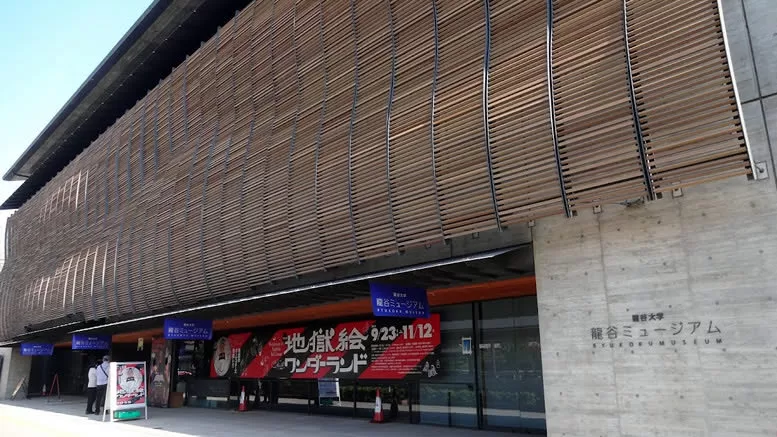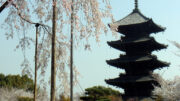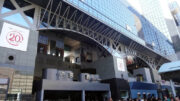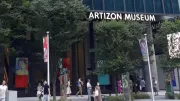Nestled in the heart of Kyoto, the Ryukoku Museum is a cultural gem that offers a deep dive into the rich history and heritage of Buddhism, particularly focusing on the contributions of the Jodo Shinshu sect. Opened in 2011, the museum is part of Ryukoku University, one of Japan’s oldest and most respected educational institutions. Whether you’re a history buff, a spiritual seeker, or simply a curious traveler, the Ryukoku Museum provides a fascinating and educational experience.

Exhibits and Collections
1. Permanent Exhibitions:
The Ryukoku Museum’s permanent exhibitions are dedicated to the history and teachings of Buddhism. The museum’s collection spans from the ancient origins of Buddhism in India to its spread across Asia and eventual establishment in Japan. Key highlights include:
Buddhist Scriptures and Manuscripts: The museum houses a remarkable collection of Buddhist texts, including ancient manuscripts and scrolls that provide insight into the development of Buddhist thought and practice.
Art and Artifacts: The museum boasts an impressive array of Buddhist art, including statues, paintings, and ritual objects. These items showcase the artistic expression and craftsmanship of different cultures influenced by Buddhism.
Interactive Displays: Modern technology is used to bring the history of Buddhism to life, with interactive displays and multimedia presentations that engage visitors of all ages.
2. Special Exhibitions:
In addition to its permanent displays, the Ryukoku Museum regularly hosts special exhibitions that explore various aspects of Buddhist culture and history. These temporary exhibits often feature rare artifacts and works of art from other institutions and private collections, providing a fresh perspective and new insights.
3. Ryukoku University Connection:
As part of Ryukoku University, the museum benefits from the university’s extensive research and academic resources. This connection ensures that the exhibits are not only visually appealing but also educational and scholarly, reflecting the latest research in Buddhist studies.
Architectural Beauty
The Ryukoku Museum building itself is a work of art. Designed by renowned architect Hiroshi Hara, the structure harmoniously blends traditional Japanese aesthetics with modern design elements. The building’s sleek lines and thoughtful use of natural light create a serene atmosphere, perfect for reflecting on the profound teachings of Buddhism.
Educational Programs
The museum offers a variety of educational programs and workshops aimed at deepening visitors’ understanding of Buddhism and its cultural significance. These programs include guided tours, lectures, and hands-on activities that cater to different age groups and interests. Whether you’re a student, a scholar, or a casual visitor, there’s always something new to learn at the Ryukoku Museum.
The Ryukoku Museum offers a unique and enriching experience, providing deep insights into the history and culture of Buddhism. Whether you’re delving into ancient scriptures, admiring exquisite artworks, or participating in educational programs, the museum promises a memorable visit that deepens your appreciation of Kyoto’s rich cultural heritage.
Nearby Attractions
After exploring the Ryukoku Museum, consider visiting these nearby attractions to enrich your Kyoto experience:
Nishi Honganji Temple: A UNESCO World Heritage site and one of the head temples of the Jodo Shinshu sect of Buddhism, located just a short walk across the road from the museum.
Higashi Honganji: also known as East Honganji, is located a few blocks east of its counterpart, it serves as the head temple of the Otani faction of Jodo Shinshu Buddhism. This historic site is known for its impressive architecture, serene atmosphere, and beautiful gardens.
Kyoto Aquarium: Situated in Umekoji Park, the Kyoto Aquarium offers a fascinating look at marine life, with exhibits ranging from local river ecosystems to ocean habitats.
Kyoto Railway Museum: Also in Umekoji Park, this museum is a must-visit for train enthusiasts, featuring an extensive collection of trains and interactive exhibits about the history of railways in Japan.
Visitor Information
Access:
The Ryukoku Museum is conveniently located in Kyoto, making it easily accessible by public transportation:
By Train: The museum is a 10-minute walk from Shichijo Station on the Keihan Main Line. Alternatively, it is a 15-minute walk from Kyoto Station, the city’s main transportation hub.
By Bus: Several Kyoto City Bus lines stop near the museum. The closest bus stop is Shichijo Horikawa, just a short walk away.
Hours and Admission:
The museum is typically open from 10:00 AM to 5:00 PM, with the last admission at 4:30 PM. It is closed on Mondays (or the following day if Monday is a national holiday) and during the New Year holidays. Admission fees vary depending on the exhibits, so it’s a good idea to check the museum’s official website for the latest information on opening hours and ticket prices.
Official Website
https://museum.ryukoku.ac.jp/




